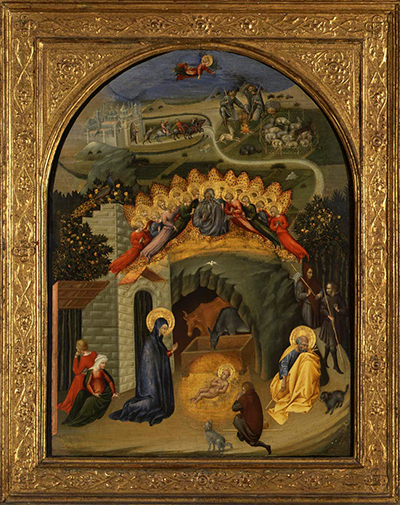The Art of the Nativity: From Baroque to Bonkers
November 23, 2024
2:00 PM - 3:00 PM
Join Kahren Jones Arbitman, Ph.D., for this one-hour lecture exploring depictions of the nativity throughout history.
This lecture is the second in a two-part series. Click here to find information about the other lecture.
The art of the nativity has evolved over the centuries to include some extraordinary interpretations of Christ’s birth in Bethlehem. This lecture begins with the imagery of the Italian Renaissance, with vast murals and sumptuous altarpieces, which as often as not included recognizable noblemen dressed in the latest fashions. We will move forward in time, examining works by Caravaggio and Rembrandt, through the Rococo era and onward with discussion of William Blake’s astonishing 19th-century interpretation and Salvador Dali’s of over a century later. In between, Gaugin moves his nativity to Tahiti and Norman Rockwell takes his to middle America.

Giovanni di Paolo, Italian, circa 1398, Nativity, circa 1450, tempera on panel, 17 3/4 x 23 3/4 in. Frick Art & Historical Center.
Join Kahren Jones Arbitman, Ph.D., for this one-hour lecture, the second in a two-part series, which will explore some of western art’s greatest masterpieces. Each is a stand-alone lecture – you do not need to hear one to appreciate the other.
Dr. Arbitman received both an MA and Ph.D. in art history from the University of Pittsburgh with a specialization in seventeenth-century Dutch art, more specifically, Rembrandt. After serving as the first curator-in-charge of The Frick Art Museum in 1985, she went on to become the director of the Palmer Museum of Art at Penn State University and the Executive Director of the Cummer Museum of Art & Gardens in Florida.



